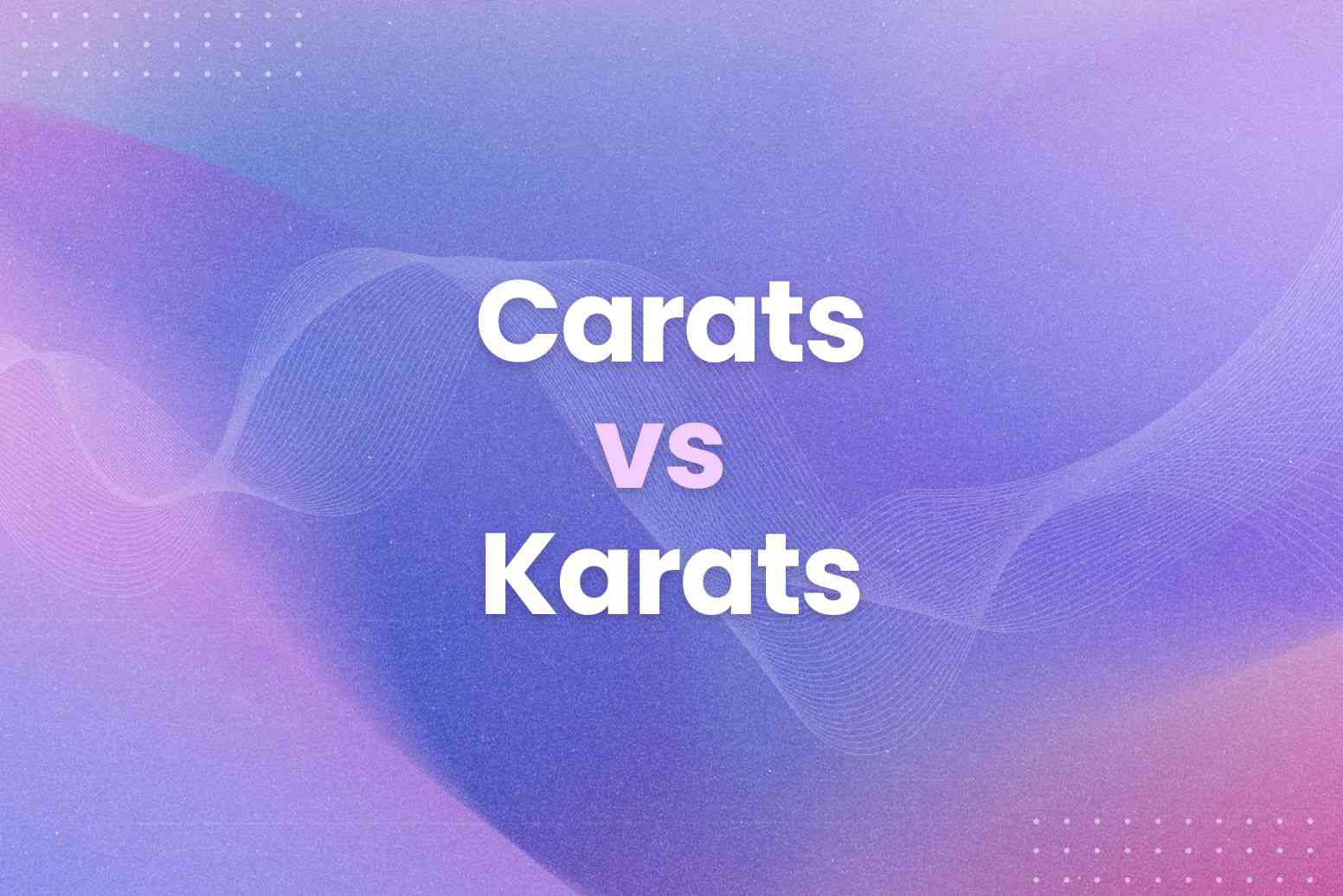Carats vs karats – Those terns have the same exact sound, and that’s one huge source of confusion. But they are totally different things with jewelry.
Carats represent the weight of diamonds and emeralds. Karats, on the other hand, elicit purity of gold. The trick is to figure out what each term is used for in carats vs karats– so you can get it right!
Let’s get an in-depth look of how they work individually!
What is a Carat?
Say, you find a diamond solitaire ring. Its beauty entrances you. But what determines its worth?
Carat weight.
The carat is the weight of a precious stone like diamonds, emeralds and sapphires. One carat is the equivalent of 200 mm or 0.2 gram.
On a 3-carat diamond ring, these big babies weigh about 0.6g. Not crammed but filled with authority!
To remember:
- Carats cannot be measured beyond stones, most especially diamonds. Don’t ever misuse it!
- More carats=more mass of the stone.
- Carats are weighed in pounds, not inches. A 2-carat emerald does not look as big as a 2-carat diamond.
- Every additional carat adds an enormous number to its value and market price.
The word “carat” came from the carob seed that people once used to measure stuff with. By 1552, carat became the go-to for weighing gems in English.
What is a Karat?
Suppose you would like a soft gold band. But what determines its quality?
Karat value.
Karats are the purity of gold, in 24-part proportions. 24-karat gold is 100% pure. 18K Gold has 18g of gold and 6g of metal, is 75% pure.
Got that? Keep these tips top of mind:
- Karat only refers to gold jewelry, not gems.
- Higher karat = higher gold content.
- 24K gold is the purest. Lower karats add more alloy metals.
- Alloys make gold more durable, but they reduce its purity and value.
The term “karat” originated around 1901 to separate purity of gold from gem weights. Clever!
Common Carats vs Karats Confusion
Carats vs Karats are homophone but quite distinct.
They’re muddled together in the diamond districts by the most professional jewellers…and that can be costly mistake.
Here are common mistakes:
- Using “karat” for gemstone weight – it only applies to gold!
- Thinking higher karat = bigger stone. It means more gold content only.
- Assuming “karat” sounds fancier for gems. Stick to “carat”!
This confusion whispers a complex history. But solving the mystery brings enlightenment.
Remember:
- Carat = gemstone weight only.
- Karat = gold purity only.
It’ll help you take better decisions when choosing you anniversary presents, clearer heart and evolve your relationships with jewelry.
Why This Matters
Messing up carats and karats may seem trifling…but it can be catastrophic!
If you sell jewelry, expect damaging effects such as:
- Losing sales from misinformed customers.
- Appearing unprofessional.
- Legal issues from misrepresenting products.
If you buy jewelry, beware:
- Overpaying for items by misjudging value.
- Buying disappointing gems or gold.
- Being unable to compare prices accurately.
For businesses, the worst risks are:
- Destroyed consumer trust.
- Costly lawyer fees.
- Total financial meltdown!
Tips for Using Carats vs Karats Correctly
For a better control, apply these tricks:
Remember the definitions
- Carat = gemstone weight
- Karat = gold purity
Simple, but vital. Post reminders in your jewelry shop or home.
Practice through play
Flashcards or Quizzes, lots of fun. You can compete over karat and carat. Play it with your friends or your clients!
Get yourself in proper contexts
Read widely about jewelry. On social media, find jewelers who know their stuff. Clarify them as you hear them (to make sure)!
Find fantastic resources
See trusted sources like the Gemological Institute of America or other trusted resources. Dictionaries and style guides if not. Knowledge is priceless.
Before long these words will flash in your mind like gold. It’s jewelry magic that you’ll master quickly!

Final Thoughts
The point is
- Carats measure gemstone weight.
- Karats indicate gold purity.
Luckily, if you ever mix up these terms, you can always chat with our AI assistant Arvin to clarify the difference. Arvin can provide a quick explanation between carats and karats anytime you need a memory refresher.
FAQs
Fun fact – carob seeds played a key role! Back in the day, traders used the seeds as counterweights because they all had a uniform mass. Carat comes from the seed name.
Carat was eventually standardized to 0.2g for gems. That leaves the carob seeds responsible for our modern standards of carat weight! Pretty neat history.
The more extra alloy metals you add to gold, the lower the overall gold content becomes. For example, 18-karat gold contains 18 parts gold and 6 parts alloy metal – diluting it down to 75% purity.
But 24-karat gold has no alloys added, keeping it 100% pure gold. So higher karats literally have higher gold content and purity due to less dilution. Makes sense when you think about it that way!
The largest diamond ever spotted is the 3,106-carat Cullinan diamond, discovered in South Africa in 1905! Clearly off the scale in terms of carat.
The Cullinan was then broken down into smaller stones, such as the 530-carat Great Star of Africa and the 317-carat Cullinan II. Even the bits were massive – the finished polished gems were more than 1,000 carats!
Pure 24-karat gold is extremely soft and malleable, which also makes it less durable. Adding sturdy alloy metals like copper and silver helps reinforce the gold and makes it more resistant to scratches and dents.
But it dilutes the gold purity at the same time. So 18-karat or 14-karat gold with more alloy metals is actually more durable for everyday wear, while 24-karat gold is impractically soft. That’s why lower karats are ideal for jewelry you’ll wear a lot!
18K contains the most gold for highest purity, while 10K has more alloys added to strengthen it – but at the cost of having less pure gold. 14K strikes a balance in the middle!






